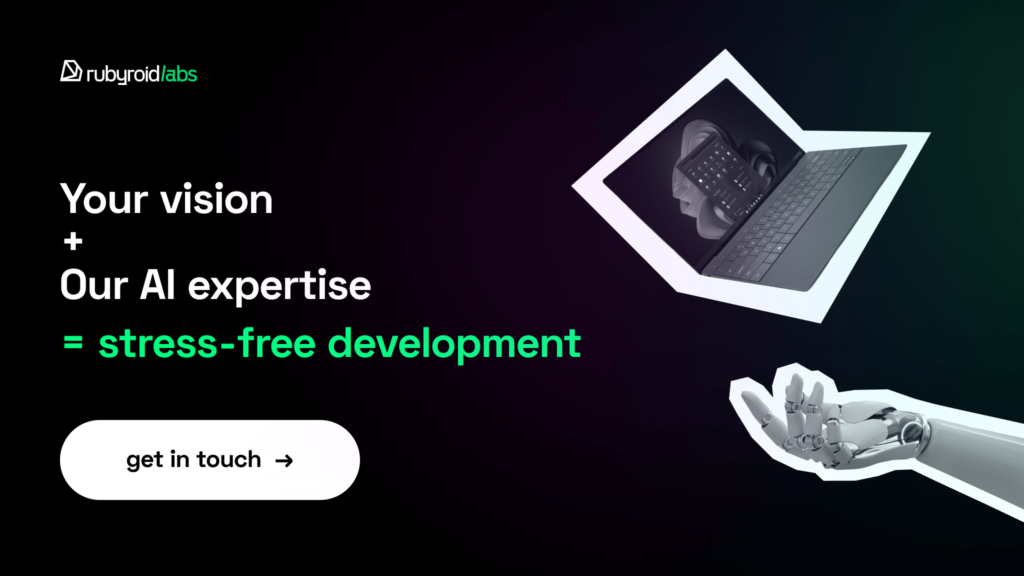Step by step, with every launch of a new AI version, the idea of talking to an autonomous digital assistant like Tony Stark’s J.A.R.V.I.S. doesn’t feel far off anymore.
Look where we are now: Alexa is managing our smart homes, Gemini can search the web in seconds, and ChatGPT has become a real buddy both in learning and in business. It assists with research and coding, generates ideas for content creation, and can teach either foreign languages or math from scratch.
Now, we are standing on the threshold of something even more advanced. OpenAI’s GPT-5 is designed to feel more like a real conversation partner than ever before. It will be more focused, fast, and surprisingly intuitive.
This shift isn’t about replacing people. It’s about rethinking how we use our time and brainpower in real work, real learning, and real business decisions. So, let’s uncover together how AI language models are changing business and education and what GPT-5 is preparing for us.

Contents:
- Artificial Intelligence Language Models: Top Players in The Market
- ChatGPT-5: What to Expect? Features and Capabilities
- How GPT-5 May Change Your Business App?
- How Can You Improve Your E-Learning Platform With GPT-5?
- Risks and Challenges Of Using AI
- Conclusion
AI models have brought quite a lot of hype to the table. And for a reason. Some critics accuse AI creators of trying to replace humans in the workplace. Artificial intelligence never feels unwell, doesn’t have a family to care for, and is available 24/7. Moreover, its abilities don’t depend on mood, time of day, or personal circumstances. The smart assistant is always here to help and generate fresh ideas for promotion.
But the truth is, AI can’t really do that, at least not yet. It still lacks many of the human mind’s strong features, such as human-level reasoning, the ability to think through complex variations, and the rich emotional intelligence that comes with being, well, human.
Still, today’s language models make excellent assistants. But they’re not full-fledged team members just yet, not the kind who can handle everything on their own. Let’s explore the best AI models that exist in the market and what they are capable of.
Artificial Intelligence Language Models: Top Players in The Market
Language models are a type of artificial intelligence that understands and generates human language. They are like supercharged autocomplete engines that, instead of predicting your next word in a sentence, can write essays, summarize videos, translate languages, generate code, draft emails, or even roleplay as your business coach.
They’re getting so much attention because they make complex tasks feel effortless. For example, now you can spend just several minutes brainstorming marketing ideas, making an e-mail draft and understanding a 50-page PDF document. Previously you would spend two or three times more on these tasks. AI models can now handle all of that and even more.
Let’s take a look at the top players in the AI market right now and where they shine best.
Top AI Tools in The Market
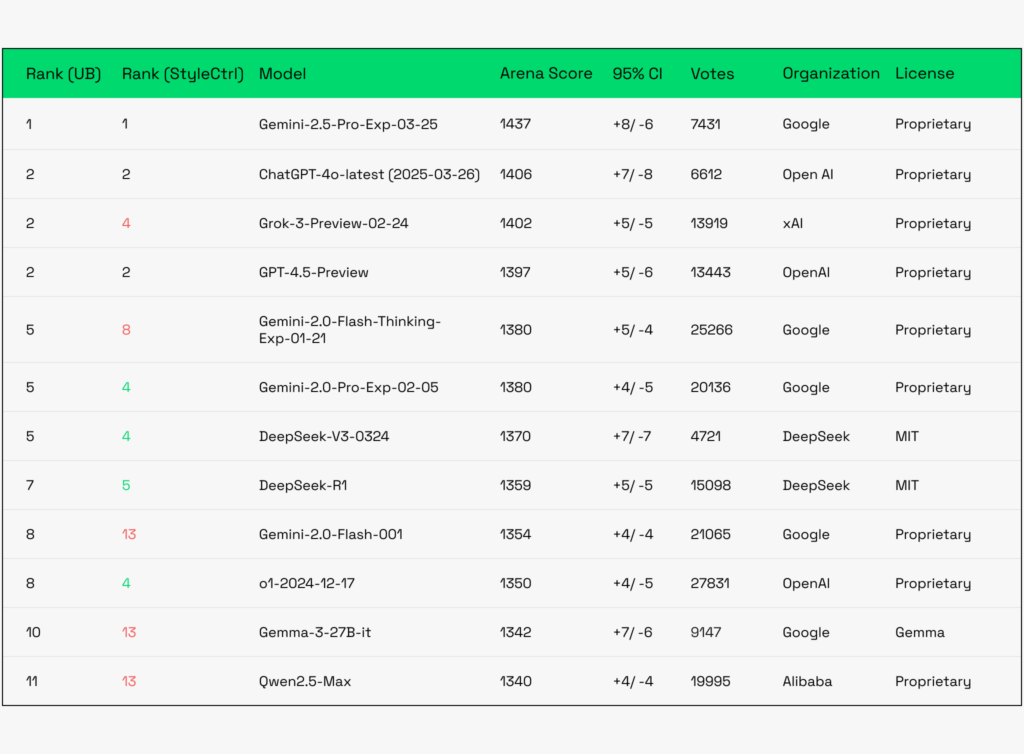
Below, we prepared a brief overview of the most commonly integrated AI tools. Some are not included in the current chart but are still widely used.
1. OpenAI
GPT-4.5 (Preview)
Best for: Creative work, high-stakes business tasks.
Why it matters: This is the next-gen upgrade to GPT-4, with improved math, logic, emotional intelligence, and writing quality. It’s exceptionally good at understanding nuance and context, making it ideal for marketing, strategy, or development teams.
Use cases: Pro-level AI assistants, proposal writing, coding, and RFPs.
GPT-4.5 balances deep intelligence with creative flexibility. It’s especially effective in complex conversations, tone-sensitive writing, or multi-step reasoning where precision and empathy both matter. If your business relies on client communication, strategic decisions, or high-trust outputs, this model is a strong contender.
GPT-4 OpenAI o1 and o3-mini Reasoning Models
Best for: Complex decision-making, multi-step problem-solving, and structured thinking.
Why it matters: OpenAI’s models are designed to handle advanced reasoning, including deductive, inductive, abductive, and analogical thinking. This makes them powerful tools for tasks that go beyond surface-level answers — like planning, diagnostics, or interpreting ambiguous input.
Use cases: Strategic planning, root-cause analysis, legal/technical evaluations, and intelligent automation.
These reasoning capabilities allow AI to break down problems, analyze trade-offs, and make sense of incomplete information like a skilled analyst or consultant. Ideal for business logic, decision support systems, or AI copilots that need to think through tasks, not just respond to them.
2. Anthropic
Claude 3.7 Sonnet
Best for: Long documents, legal analysis, research synthesis, customer service workflows.
Why it matters: Claude 3.7 Sonnet is Anthropic’s most capable model to date. It excels at understanding and generating structured, context-rich content — even across very long inputs. Its ability to stay focused, maintain tone, and reason through documents makes it ideal for high-stakes, text-heavy tasks.
Use cases: Contract review, policy summarization, technical documentation, knowledge base generation, multi-turn customer support.
Claude 3.7 stands out for its focus, clarity, and long-context recall. It’s suitable for businesses where accuracy, tone consistency, and document integrity are critical. It’s less prone to hallucinations in structured content but may be more conservative or less creative than GPT-style models.
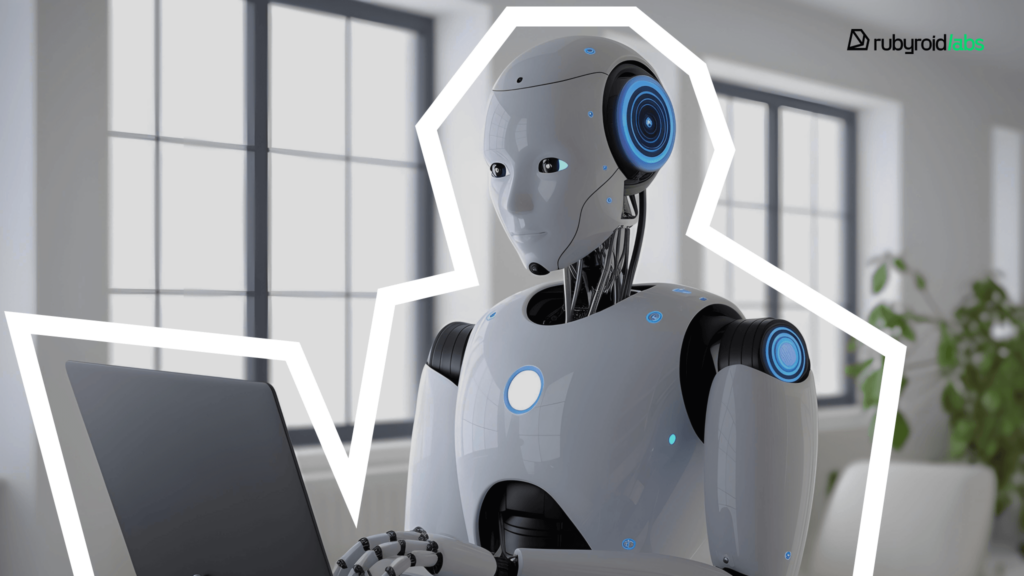
3. Google
Gemini 2.5 Pro Preview (Google)
Best for: Enterprise-grade AI tasks, content creation, deep reasoning.
Why it matters: This is Google’s top-tier brain. It’s smart, can handle massive inputs, and works well across multiple languages and formats (text, code, images).
Use cases: Content generation, customer insights, code review.
It’s not the cheapest option, but it delivers premium results.
Gemini 2.0 Flash (Thinking Experimental)
Best for: Fast chatbots, support, responsive tools.
Why it matters: This is Google’s lightweight, super-fast model. It’s built for speed-critical apps like live chat, customer-facing bots, or internal dashboards where low latency is key.
Use cases: Customer support, mobile apps, internal help desks, e-commerce assistants, dashboards, and real-time tutoring tools.
You can toggle a special “thinking mode” for deeper replies or keep it fast and light, which is ideal for balancing speed and smarts.
4. DeepSeek
DeepSeek R1
Best for: AI devs, startups, research teams.
Why it matters: It’s open source, performs close to OpenAI-o1 level for reasoning and code, and you can fine-tune or distill it.
Use cases: Custom AI tools, embedded assistants, or training your own model.
DeepSeek R1 offers strong reasoning and code performance in an open, customizable format. It’s perfect for teams that want control over their AI stack. However, as with many open models, security, safety, and content filtering depend on how well you implement guardrails. Check out our deep comparison of DeepSeek R1 vs.ChatGPT.
5. xAI
Grok-3-Preview
Best for: Real-time news, trending insights, casual chatbots.
Why it matters: Grok has access to the live internet and leans into a more witty, casual tone. It’s not as polished for business tasks but great for engagement or entertainment.
Use cases: Public-facing assistants, social apps, or media tools.
Grok shines in personality-driven interactions and real-time awareness, making it ideal for brands that want their AI to feel human, humorous, or culturally in-the-moment. However, it lacks the depth of enterprise models.
Even with many AI models available today, OpenAI continues to turn heads as one of the original pioneers of artificial intelligence. Now all eyes are on OpenAI’s most expected release — GPT-5. Some experts believe it will be a breakthrough in AI culture, while others argue there’s nothing particularly groundbreaking to expect. Let’s find out the details.
ChatGPT-5: What to Expect? Features and Capabilities
The upcoming GPT-5 is bringing high expectations across all industries, including business and education.
Just imagine that shift in your workflow: while you focus on your core task, your AI assistant is summarizing a Google Meet, drafting a presentation, and curating a product selection for the upcoming spring expo, one task after another, handled effortlessly.
An assistant that autonomously completes the tasks you assign. With advanced features and capabilities, this new generation of AI is set to outperform previous versions.
Key Features and Capabilities of GPT-5
Based on information shared (and hinted at) by OpenAI, industry insiders, and OpenAI CEO Sam Altman in his interview with Lex Fridman, we’ve highlighted the key features expected in GPT-5.
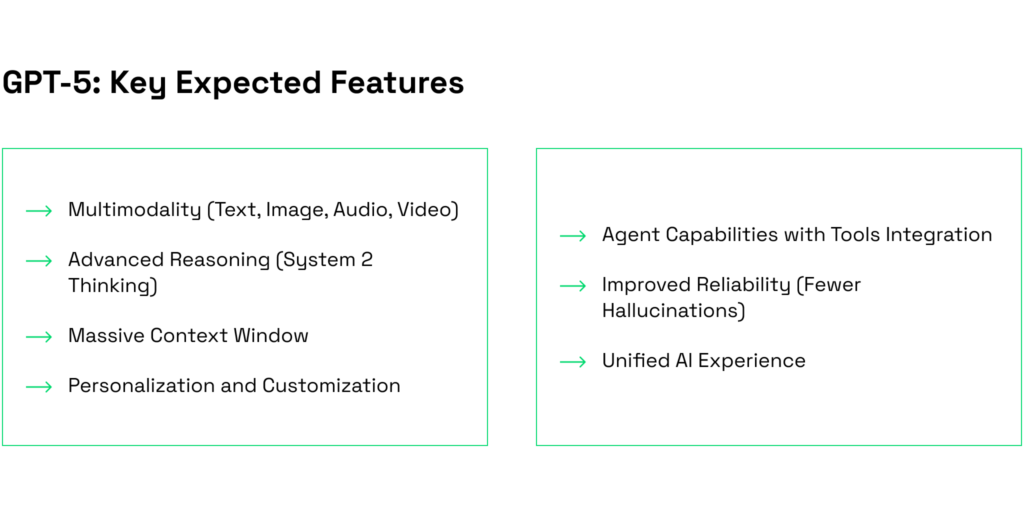
- Multimodality (Text, Image, Audio, Video)
GPT-5 is likely to go beyond just text. It will understand and generate images, audio, and even video, making conversations with AI more natural and immersive. - Advanced Reasoning (System 2 Thinking)
More than just fast answers, GPT-5 is expected to “pause and think.” This means better logic, deeper problem-solving, and more accurate conclusions across complex tasks. - Massive Context Window
GPT-4o handles up to 128,000 tokens, and GPT-5 might go even further, allowing it to understand and respond based on entire books, long conversations, or big datasets. - Personalization and Customization
GPT-5 may allow users to fine-tune the model to their needs, whether for specific business domains, learning styles, or workflow preferences. - Agent Capabilities with Tools Integration
With platforms like Chatbase, GPT-5 could act like an AI agent and go beyond just chatting to doing things like updating your CRM, booking appointments, or pulling data from your systems. - Improved Reliability (Fewer Hallucinations)
OpenAI is focusing on accuracy and consistency, making GPT-5 more dependable, especially when precision matters. - Unified AI Experience
OpenAI is aiming to simplify things. Instead of switching between models or tools, GPT-5 may offer a seamless, all-in-one solution.
Overall, ChatGPT-5 is expected to bring a breath of fresh air to the philosophy and capabilities of AI language models. Every further version blurs the border between human and machine communication, and GPT-5 is no exception.
It’s being billed as a significant advancement in comprehension, reasoning, and real-time interaction. However, the bar has been set quite high by both the tech sector and the general imagination, so expectations may be exceeding reality.
We’ll focus on the positive moments and see how GPT-5 may enhance businesses and their software.
How GPT-5 May Change Your Business App?
The adoption of AI technologies continues to grow. According to the McKinsey’s 2024 Global Survey, AI integration rose from 72% to 78% in just one year.
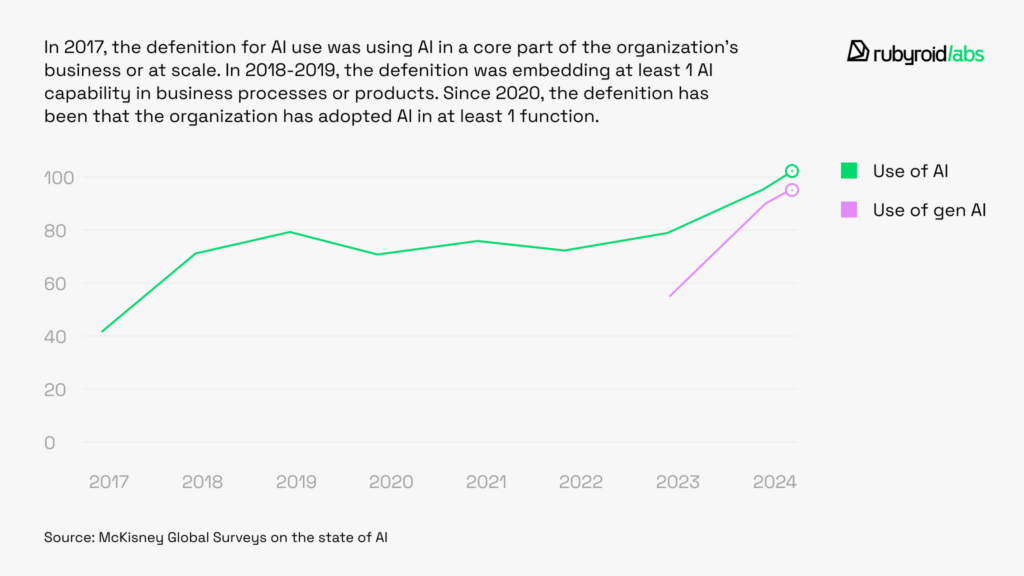
This means that using artificial intelligence in day-to-day operations is becoming more popular and…increasingly normal, let’s say.
If there’s an opportunity to automate repetitive tasks and free up time to focus on strategic thinking, skill-building, and innovation, then why not let AI handle the basics?
The same survey highlights industries where AI adoption is already strong:
- IT
- Marketing and sales
- E-commerce and retail
- Product/service development
- Media and telecom
- Less in healthcare, but we think that’s temporary.
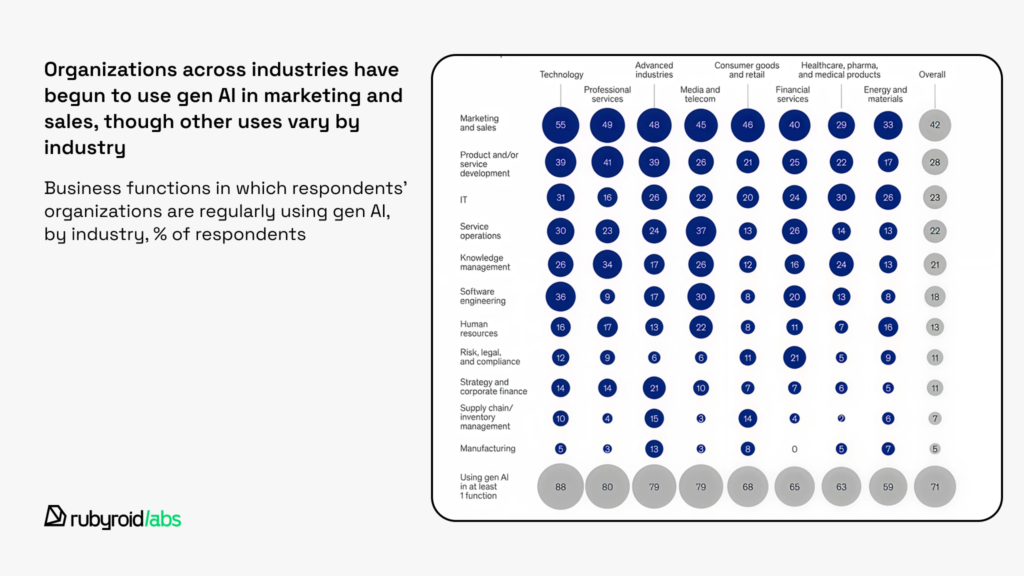
A good question arises: if the adoption of “simple” AI has already surged, what will happen with the arrival of a smarter version — GPT-5?
How GPT-5 Could Improve Industries
Customer Support
With GPT-5, your customer support bots can go beyond canned responses. AI will ‘truly understand’ your customers and will be able to answer complex questions, picking up on tone and emotion, and even solving issues before they escalate. It’s like having a superhuman support rep on call 24/7.
Zendesk implemented OpenAI’s models, including GPT-3.5, GPT-4, and GPT-4o, to power their AI-based customer service product to better automate responses, suggest solutions, and streamline workflows, improving agent productivity and customer satisfaction.
Content Creation
GPT-5 could handle any type of content, including blog posts, social captions, ad scripts, or even visuals. No more text clichés or obvious AI-generated graphics. Whether you’re launching a campaign or keeping your content calendar full, it’s like adding a full creative team (without the overhead).
Canva integrated GPT into its platform to help users generate written content directly inside designs, from Instagram captions to video scripts.
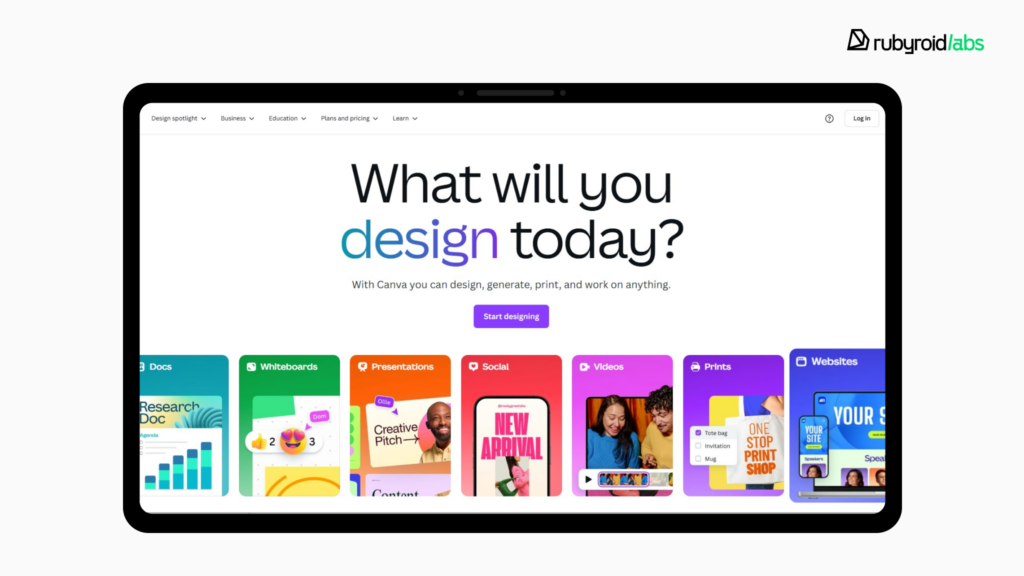
Research & Big Data Analysis
GPT-5 can process and analyze large volumes of information, such as scanning reports, documents, and datasets, to pull out the most important insights. It’s important, especially in fields like healthcare, law, finance, or research and development, where critical details are often buried in massive amounts of data. AI helps ensure nothing gets overlooked and can find critical solutions and suggest connections that might not be obvious to a human eye.
In our blog post about AI and big data analysis, we highlight how artificial intelligence is already being implemented across various industries.
Software Development
If AI already helps developers write code, then imagine what happens with GPT-5 on board! We can definitely expect faster product delivery and more accurate code thanks to the tandem of AI + humans. Moreover, developers could get help with debugging, testing, and even architecture planning.
GitHub Copilot helps developers write code faster, suggest entire functions, and even fix bugs, all within the IDE.
Workflow Automation
Imagine if your AI could not only send notifications or generate reports but also handle multitasking for you. All you need to do is operate the AI assistant and manage its work. That’s the expected power of GPT-5 in streamlining operations, reducing manual work, and getting faster results in completing tasks.
So far, Notion, with its integrated AI can automate notes, summarize meetings, and generate tasks, helping teams streamline daily workflows.
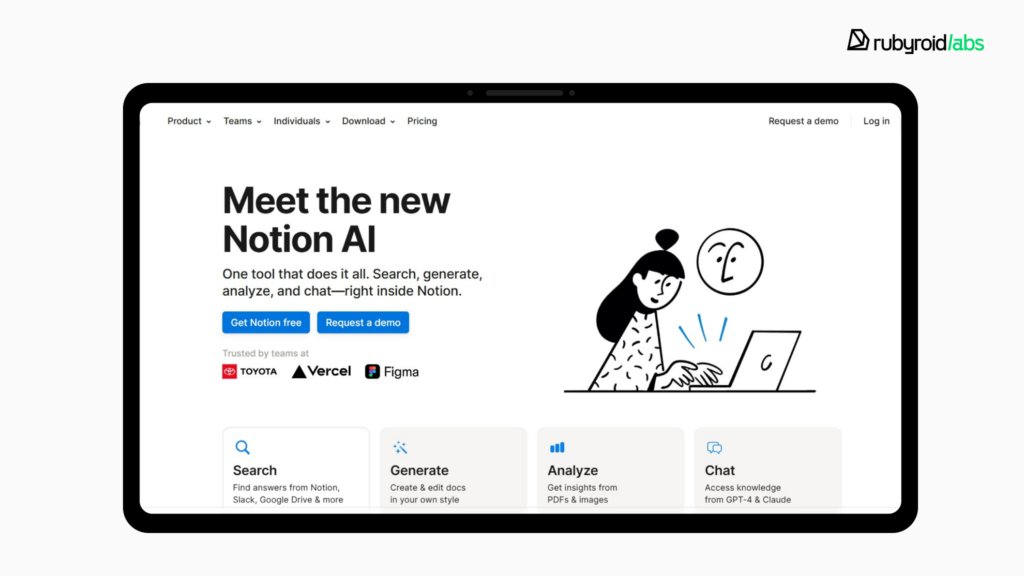
Voice & Real-Time Assistants
With their potential multimodal capabilities, GPT-5-based voice assistants can go much beyond basic commands. They will be able to comprehend context, emotion, and intent, allowing for more natural and intelligent discussions. They function more like smart collaborators than simple tools, managing tasks or offering real-time support.
As you see, with smarter reasoning, deeper context, and powerful customization, GPT-5 can be more than an upgrade for most industries.
If you’re running a business, building products, or just trying to keep up with the times and trends, now is the perfect moment to start thinking about how this next-gen AI can work for you.
We can help with our ChatGPT integration services, assist you with choosing the most fitting AI tool for your application, make a development roadmap, and start building your AI-powered product.

And if you’re interested in integrating AI into your future educational platform or application, the next chapter is for you. We’ll explore how AI, and GPT-5 in particular, can enhance the quality of knowledge and education.
How Can You Improve Your E-Learning Platform With GPT-5?
Endless debates about whether AI will cause a setback in education and the development of new professionals or, on the contrary, spark greater interest in learning seem to never stop.
However, the value of AI in education speaks for itself. It’s not about replacing in-class learning or simply making students’ lives easier (though that’s a significant benefit too). When used thoughtfully, AI offers meaningful advantages to every part of the educational process.
We’ve discussed the benefits and risks of using AI in education in our recent post, where you’ll find research, statistics, and compelling real-world examples.
From AI-powered tutoring to smart platforms, the e-learning market offers a variety of products for both self-learning and classroom use. Let’s take a look at what’s available and how GPT-5 can enhance these solutions.
In-Class Learning
AI isn’t here to replace teachers. It can give them superpowers.
For teachers
GPT-5 can assist with lesson planning, content generation, quiz creation, and even adapting materials for different skill levels or special needs. Imagine an assistant that not only generates a full lesson plan but also creates games, interactive scenarios, selects and downloads relevant video or audio files, and compiles reports on students’ skill levels.
Platforms like Khan Academy’s Khanmigo are already using GPT to assist teachers by suggesting personalized teaching strategies and providing real-time student support.

For students
GPT-5 can become a reliable learning companion that’s always ready to help either late at night before an exam or during a quick study break. It can break down complex topics into easy-to-understand language, offer writing support, and help students prepare for tests more effectively. Think of it as an on-demand academic coach in your pocket.
This is especially important for students with disabilities, as GPT-5 can provide text-to-speech support and adapt explanations to different learning styles, helping make education more accessible and inclusive for everyone.
Thus, on MentalUp, AI is used to create personalized learning paths for students based on their strengths, weaknesses, and progress, adapting the difficulty of educational games and brain-training exercises in real time.
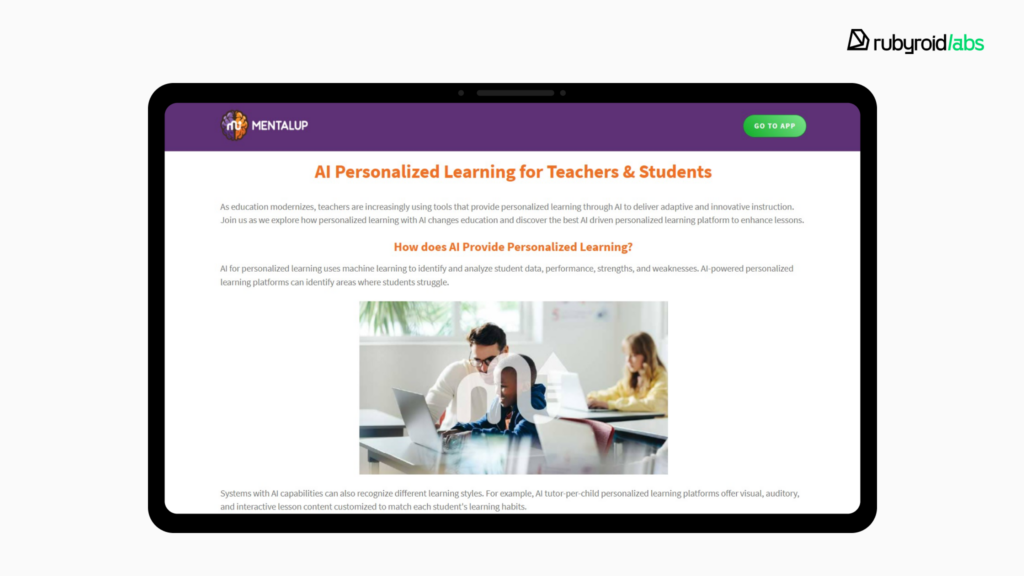
Self-Learning
For independent learners, independent learners get a hyper-personalized learning experience that feels like it was built just for them. Whether a student is diving into calculus, picking up Spanish, or exploring a new hobby, GPT-5 can design a smart, flexible learning plan tailored to their goals, schedule, and current skill level.
It also keeps students motivated with interactive feedback, progress tracking, and even gamified learning experiences.
Magoosh, a popular test-prep platform, already uses AI to personalize learning plans, check homework, provide explanations and tutoring, and suggest relevant resources for deeper understanding. With GPT-5 integration, the platform could reach new heights — offering even more natural, human-like interactions, smarter content recommendations, and a smoother, more adaptive learning experience.
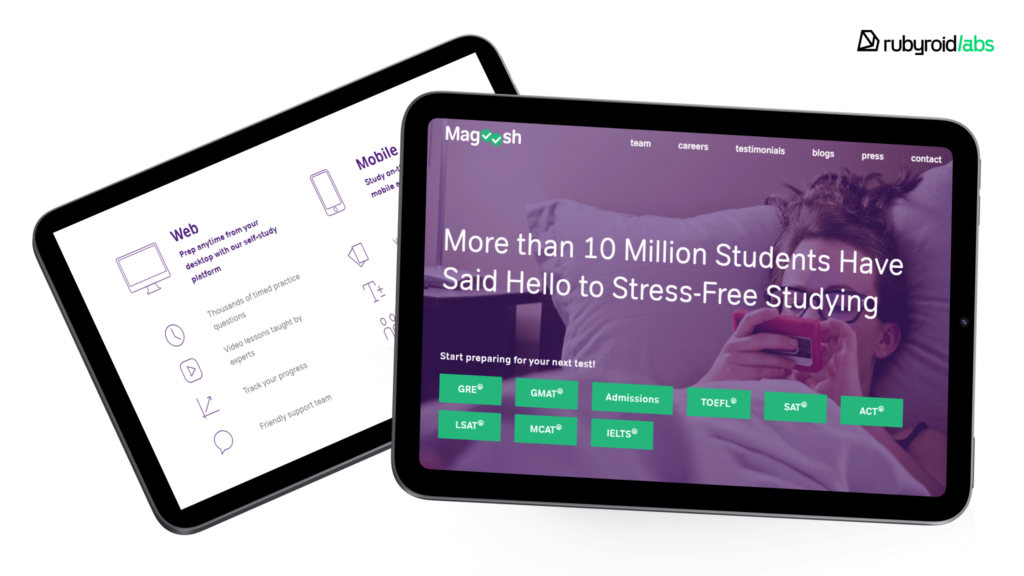
Teaching Kids
Kids learn best when learning feels like play, and that’s where GPT-5 really shines. With natural conversation, storytelling, and voice interfaces, it can explain complex ideas in a fun, engaging, and age-appropriate way.
It can also adapt to a child’s mood, attention span, and learning style, offering a more personalized experience than traditional apps.
Buddy.ai, an English-speaking AI tutor for kids, uses conversational AI to teach language skills through fun dialogues, games, and challenges. With GPT-5, these conversations can become even more natural, responsive, and educational.

As we look ahead, one thing is clear: GPT-5 is more than simply just another upgrade of ChatGPT’s previous versions. It’s anyway going to be an innovative instrument with the potential to shift the educational process.
So, whether you’re building tools for teachers, platforms for students, or engaging learning experiences for kids, integrating GPT-5 means creating smarter, more inclusive, and more human-centered education.
Risks and Challenges Of Using AI
Even the most powerful and helpful tools can become quite dangerous in the wrong hands. The same is true for AI language models and GPT-5 either.
Artificial intelligence offers massive potential to transform education, entertainment, business, and beyond. However, it also comes with some serious risks we can’t ignore. Let’s take a closer look at the key concerns:
1. Data Security
AI systems need large amounts of data to work effectively, including personal information like names, locations, learning history, and sometimes even biometric data. If these systems aren’t properly secured, this sensitive data can be exposed, stolen, or misused.
In education, for instance, a breach could mean student records falling into the wrong hands. As AI becomes more embedded in our digital lives, protecting users’ data must be a top priority.
2. Information Accuracy
AI can sound incredibly confident even when it’s completely wrong.
Chatbots and content generators might produce misleading, outdated, or just flat-out false information, especially when they’re trained on unverified sources. In education, finance or healthcare, that kind of misinformation can have serious consequences. That’s why it’s crucial to double-check AI-generated content and treat it as a helpful assistant, not an infallible source.
3. Fraud and Deepfakes
As AI tools become more advanced, so do the scams. Apart from “good” software, there exist applications that can perfectly mimic someone’s voice, writing style, or even their face and mannerisms in videos. This opens the door to impersonation scams, fake audio messages from “family” or “bosses,” and even AI-generated content meant to deceive or manipulate.

4. Risks to Intellectual Property
One of the biggest concerns for creators, including musicians, writers, and artists is how AI is being trained.
As reported by The Guardian, over 200 high-profile musicians, including Billie Eilish, Nicki Minaj, and Stevie Wonder, signed an open letter demanding protection against AI systems that mimic artists’ voices or styles without consent. They argue that tech companies are using their work to train AI models without permission, which can lead to AI-generated content that competes with or dilutes the original creators’ work.
So, what could be done to avoid most of these risks and implement AI safely? Well, the most key answer is responsible development and use. AI isn’t inherently good or bad. it depends on how we use it. To minimize the risks, developers, companies, and lawmakers need to work together to:
- Set clear regulations around data privacy and intellectual property.
- Require transparency when AI is involved in content creation.
- Invest in tools that detect and flag deepfakes or fake content.
- Educate users on how to use AI safely and responsibly.
Conclusion
OpenAI is getting ready to surprise us again. While GPT-5 may not yet be as advanced as a J.A.R.V.I.S.-like assistant, it’s certainly a big step closer. As Sam Altman mentioned in his interview, by the end of the decade there’s a high possibility to reach that level of AI and build a true AGI (Artificial General Intelligence).
With GPT-5, we’re gaining access to a more sophisticated language model that can enhance service quality and power smarter, more adaptive applications.
Whether you’re using GPT-5 in IT, marketing & sales, e-commerce or banking, this AI tool will bring real multitasking capabilities and deeper autonomous work, letting you manage the workflows and operate it to achieve better results.
In e-learning, GPT-5 will introduce more personalization, creativity and reliability, making education more inclusive and accessible for all, including people with disabilities.
If you want to create an AI-based application, we can help you develop your idea into a great project with a strong mission and rich functionality. Contact us for a free estimate and discussion of your needs and goals. Let’s build something that truly serves people.
